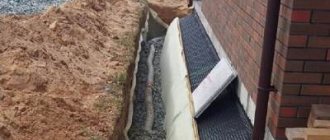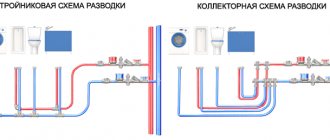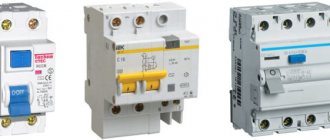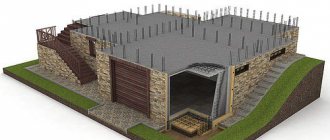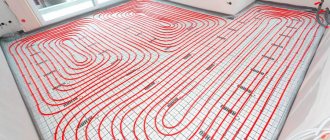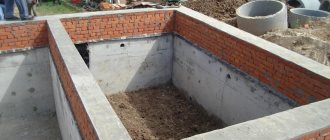Before reducing the diameter of a pipe, you should study the theory well. Reducing the diameter of a pipe at home can be useful to anyone who repairs various equipment with their own hands. Of course, if you need to reduce some element of the system, then it is best to use a special adapter and simply connect two pipes of different diameters. However, if you need to get a narrowed or bent tube from what you already have, you can resort to rolling. Rolling is the plastic deformation of a product into the desired shape.
Which step drills for metal are best to choose?
To make a high-quality hole in metal, you need to select a drill that will cope with this task. If you need to perform high-precision work in sheet material up to 4 mm thick, then a step drill for metal will be most suitable for this. Such cutting products not only have increased accuracy, but also require the correct approach to the drilling operation.
To process the material correctly, you need to know some of the nuances of selecting and using such a tool. All the intricacies of metal processing using cone drills will be discussed in detail below.
Point 4 - straightness of the barrel
Ideally, the smoke exhaust barrel should be straight, but this is not always possible. For example, in a situation where you want to run it along the outer wall of the house. After all, you have to get over the eaves of the roof, and you don’t want to make holes in the roof, but you want to put the pipe around it. In this case, it needs to be bent. But you must understand that every bend and 90-degree turn is additional resistance, for which you need to add another meter of pipe height. That is, if the minimum height of a straight chimney is 6 meters, then the required height of a pipe with one bend will be already 7 meters. To avoid increasing the height, it is better to make bends at an angle of 45 degrees, not 90. Here you need to keep in mind that if you have a smoke exhaust system, the gas service will accept it, and they did not install it, then you will most likely have an indirect pipe will not accept everything. For all other boilers, except gas ones, the bends of pipes for smoke removal are not particularly important, incl. if it is a chimney for a buleryan or a sauna stove, or a potbelly stove. But they affect the draft, which must be compensated by increasing the height of the pipe.
How to sharpen a step drill with your own hands
Long-term use of a gimlet causes it to become dull. This makes it necessary to have information on how to sharpen it correctly. Although this is not an easy procedure, if you have reliable information and skills, everything will work out.
The procedure for sharpening a cone drill requires the following sequence of actions:
- secure the gimlet with a vice;
- install a grinding wheel on the grinder;
- Being careful, sharpen the cutting edges that have been damaged.
There are several options for sharpening a step drill. For example:
- Single-plane. This type of sharpening is used to sharpen tools whose thickness does not exceed 3 mm. During the sharpening process, it is recommended to attach the tool to the sharpening wheel, moving the gimlet along the wheel. It is worth noting that using this type of sharpening may cause slight damage to the cutting edge of the drill.
- Conical. Recommended for sharpening gimlets with a length of 3 mm or more. While working, it is recommended to lightly press the drill onto the circle and carefully move it along the work surface.
- Finishing. Used to correct small errors and inaccuracies that have arisen after sharpening. For work you should take a soft sharpening stone.
Sharpening step drills yourself requires excellent lighting, vision and accuracy.
Point two - condensate collector
This is another element that also does not affect chimneys and chimneys, but serves exclusively to collect and discharge condensate in systems with modern boilers. This element is required if you have a high-efficiency boiler (gas, diesel, liquefied gas or pellets). The temperature of the exhaust gases from it will be low, and the dew point will certainly form somewhere in the middle of the chimney for a long-burning stove or boiler. The resulting condensate will flow down, and if we do not ensure its removal, then over time it will accumulate so much that it will leak through the leaks of the smoke exhauster for the stove, or will simply pour into the boiler. And this absolutely cannot be allowed. Condensate must be drained.
Design and characteristics of a cone-step drill
These instruments have a rather complex design. Their configuration may differ depending on the variety. Let us consider in more detail what parts such products consist of. The top of the drill is represented by a pointed tip, which makes it possible to cut into metal of any density without much difficulty.
Other tools are also used for processing metal sheets, for example, crown tools. A metal drill of this type does not require the use of auxiliary centering devices, but it is not suitable for working with thin metal. Spiral analogues also do not allow such work to be performed accurately.
Step products are very effective when working with aluminum, steel, copper and other sheets and pipes. Tools of this type are shaped like a cone, which includes 2 grooves. They promote drilling of materials. During operation, when moving to the next level, a chamfer is formed for the hole that is created by the previous step.
Due to their design, step drills are suitable for working with copper, steel and aluminum sheets
A 4-32 mm step drill for metal also has an opposite end, which is mounted in the tool chuck. The opposite end, or tail, has the most suitable design for this and consists of six edges. The advantages of such tools are undeniable, which is why many craftsmen recommend them for working with metal parts.
Professional marking of pipes for subsequent welding
Transferring the required dimensions from the drawing to the pipe to create a part or part of the pipeline is called marking. This process is an important and responsible operation that requires precision execution. A specialist applying marks must be able to read drawings well, as well as have a developed imagination, be able to make geometric constructions and draw developments, understand the size of allowances for subsequent processing of parts and pipes, take into account the consumption of materials, using different trims in order to save money.
VT-metall offers services:
When marking for geometric constructions of signs and lines, measuring tools and templates are used. The list of basic devices can include a ruler and a square, a compass and a tape measure, a protractor and a scriber, a level, a bore gauge, a center punch, a surface planer, a hammer and a caliper.
In addition, templates should also be used. They are used for marking parts of the same type. The material for production is mainly roofing felt, tin or cardboard.
To apply signs and marks, chalk paint with various admixtures consisting of liquid glass or wood glue is usually used. For one liter of water, it is enough to take 120 g of chalk and 7 g of wood glue. The surface is painted with this solution, then marks are applied with a scriber and, to prevent their abrasion, they are punched. To avoid inaccuracies and errors, using chalk for such purposes is unacceptable.
We recommend articles on metalworking
- Steel grades: classification and interpretation
- Aluminum grades and areas of their application
- Defects in metal products: causes and search methods
Advantages of cone drills
Stepped products have the following positive properties:
- allow you to make a hole with smoother edges compared to spiral and feather counterparts;
- For holes of different diameters, one step drill is used;
- perfectly centers the hole;
- used for processing very thin sheet metal;
- ideal for processing non-ferrous metals;
- for large volumes of work, it saves time due to the absence of the need to frequently replace drills of different diameters.
A step drill allows you not only to perform high-quality drilling of metals, but also to correct hole defects that were made with other types of products. For example, if the center of the hole is displaced when using spiral analogues, a conical one can completely correct the defect.
It is also possible to expand the holes if necessary to a fixed diameter. Despite the higher cost of cone drills, significant savings can be achieved with frequent use. Due to the absence of the need to purchase a large number of tools of different diameters.
A cone drill allows you to chamfer during drilling and therefore does not require additional time, which saves time during large volumes of work.
Miter cutting
In this case, we will tell you how to cut a pipe at an angle of 45º. Marking will be needed in this case too (more details: “How to cut a pipe at an angle - marking options for round and profile pipes”).
To apply it you will need a square sheet of paper that needs to be folded diagonally. The resulting triangle is wrapped around the pipe and fixed. This will create an angle of 45º.
You can, of course, try to lower the pipes at the desired slope into the water, then the boundary of the wet surface will serve as a marking. However, it is best to use a special device for corner cutting - a miter box.
The shape of the miter box looks like an inverted letter “P”. Ready-made holes with different angles have already been made in its opposite walls. It is enough just to place the pipe inside the device and cut it by running a hacksaw along the selected grooves.
Results
Thus, making an even cut of a pipe from any material yourself is quite simple. There are only a few tricks in this matter that will allow you to quickly and efficiently carry out all the work and build yourself the necessary object for your household or dacha. We also note that it is better to check the measurements several times before starting cutting, because you can accidentally make a mistake and ruin the material, incurring additional financial losses.
Checking the sharpness of the drill
After a visual inspection shows that the cutting edges are smooth and sharp, check whether the correct sharpening angle of the metal drill is maintained and whether the length of the working edges meets the standards. To evaluate, you will need a special template, a protractor or protractor, and a caliper.
Checking the length of the cutting edges with a caliper
What parameters need to be checked?
- Is the angle of the cutting edge tilted forward? The presence of such an error makes the cutting edge not the highest point of the tooth and forms a hill on the back surface. This causes the drill bit to rub against the back surface of the material and not drill. The error is corrected by sharpening the drill again.
- Are the lengths of the cutting edges consistent from the center point on the web to the side apexes of the cutting edges? This distance must be the same on both sides, otherwise the diameter of the final hole will be larger than the nominal value.
- Check that the apex angle is 120°. You can determine the sharpening angle of a metal drill using a purchased or homemade template. It is important to ensure that the apex angles match for both teeth, otherwise only one side will work.
Correct and incorrect sharpening of a drill
After checking the basic parameters, drill into any metal workpiece. If the sharpening is done correctly, the drill will smoothly enter the metal, and the chips will evenly exit the grooves on both sides. And the finished hole will exceed the nominal diameter by no more than 0.05–0.1 cm.
After drilling the workpiece, sharpen the jumper to reduce the force applied during operation and reduce tool wear.
How to make a template for checking drill sharpness?
A template for checking the sharpening of a metal drill can be made independently from sheet steel or tin. You can take a template from the store as a guide. The simplest template can be made from two or three nuts. Nuts are ideal for these purposes, as they are regular hexagons with internal angles of 120°. If the nuts are connected, the angle between their faces will also be 120°. The nuts can be welded or glued to each other using hot glue.
Drilling process
Once the location for the source has been accurately determined, you can begin installing the needle.
Manual drilling process
The work is done in the following sequence:
- if you plan to use the needle in winter, you need to take care of its insulation in advance, so it is advisable to immediately dig a pit 1.5-2 meters deep;
- At first, the easiest way is to drill a hole a few meters in the ground. An ordinary garden auger is suitable for this, although you can start straight away with driving it in;
- for driving, you need to use a wooden spacer or a special metal nozzle so as not to damage the end of the pipe;
Driving attachment
- as they deepen, additional sections are connected with couplings, and all threaded connections must be well sealed;
- to find out that the aquifer has been reached, water is poured into the pipe - as soon as it begins to go down unhindered, it means that the desired layer has been found;
- after this, the needle is driven in another 500–600 mm and a pump is mounted to it.
First of all, all dirt needs to be removed from the pipe; to do this, it needs to be pumped well. Pumping is completed as soon as clean liquid begins to flow from the pump.
In general, it is advisable to submit it for laboratory analysis, and if its quality is satisfactory, proceed to final arrangement. If the water is not very good, then you can try to deepen it a few more meters.
The final stage is concreting the base around the well. This will protect the source from the penetration of perched water.
Making a driven water source with your own hands is not too difficult. This requires a minimum of time and not many tools, and the drilling technology is extremely simple. Therefore, any homeowner can handle such work without any problems.
Previous articles Next articles
Related Posts
- 05.03.2017.
Do-it-yourself water supply at home from a well
- 05.03.2017.
Self-repair of drinking wells
- 22.02.2017.
Where is it better to drill a well: at home or outside?
- 22.02.2017.
Manufacturers of step drills
Products made in China are of low quality (there are exceptions). To buy a good cone drill, you should pay attention to tools made in Europe and Russia.
1. “Zubr” - stepped drills from a domestic manufacturer are of reasonable cost. The quality is at a fairly high level.
Cone drills can be made from ordinary tool steel or coated with more wear-resistant alloys. In the latter case, the price will be significantly higher, but the quality of the cutting surface will remain sharp longer even when performing a large volume of work.
2. “Attack” - Russian-made conical drills, which in quality and cost are not inferior to the best products from foreign companies.
Reviews about the products of this company are only positive, so you don’t have to worry about the quality, and in order not to overpay, you should select a tool taking into account the maximum diameter that will be needed in the work.
3. “Bosch” - the products of this German company are excellent for professionals and for working with metal at home.
The diameters on the tool are marked using a laser system, so in case of long-term use, the inscriptions are not erased. To increase the drilling speed, the top of the Bosch step drill is sharpened crosswise, and the workpiece is ground in both the transverse and radial directions.
Such processing of the tool allows, when using it, to obtain a high-quality hole, the diameter of which will fully correspond to the stage of the product.
4. “Falon-Tech” - drills from a German company have an additional titanium coating, which allows you to increase the tool life by more than 2 times.
The product has a laser marked diameter and a standard shank that is ideal for use with a screwdriver or hand drill.
Despite the increased quality of the product, its cost remains low. If you need to purchase a cone drill for home use, then the choice of products from this company is the most optimal.
All of these cutting tools do an excellent job of drilling metal up to 4 mm thick. If you need to work with thicker metal, it is recommended to use core drills.
Schemes for exhausting the chimney through the ceiling and roof
1st floor
The passage of the chimney through the 1st floor ceiling is equipped with a metal box filled with a layer of thermal insulation. To do this, you can use expanded clay filling and filling cavities with mineral wool. For non-residential premises, the use of asbestos slabs is allowed.
Installation diagram of a chimney through the ceiling with access to the roof (one-story house)
2 or more floors
When passing through slabs of the 2nd and subsequent floors, a situation may arise when the chimney cannot be installed vertically. Builders could move partitions or install a beam in the floor structure.
Therefore, in order not to take risks, when installing chimneys in a multi-story building, it is better to use a house ventilation system. If you make a horizontal indentation, possible condensation will collect in this place and a thick layer of soot will be deposited on the walls. And it will be difficult to clean the chimney through turns.
Installation diagram of a stove chimney in a 2-story house
Diagram with a description of all elements
How to drill correctly
If you have a sharp tool, you can drill a hole in a metal workpiece no more than 4 mm thick. For proper operation, it is recommended to follow the following sequence of actions:
- Mark the location where the hole needs to be drilled using a core.
- During drilling, the tool must be held perpendicular to the working surface of the metal workpiece.
- The grinder (screwdriver) should operate at low speeds. Their value depends on the diameter: with increasing diameter, the rotation speed of the tool decreases.
- As a result of drilling, the operating temperature of the working surface increases. To reduce it, it is recommended to use a thin layer of oil to lubricate the tool.
Violation of the operating procedure can lead to its rapid dulling.
It is important not only to adhere to the recommendations for using the tool, but also to choose it correctly. The quality of a drill largely depends on the color of the metal from which it is made. For example:
- Steel with a hint of grey. This indicates that the finished tool has not been subjected to heat treatment. Such a gimlet will not last long.
- Black. After manufacturing, the drill was processed using hot steam. Thanks to this, the strength of the metal also increases.
- Golden. This color of the gimlet means that the metal is free from tension. This increases its quality and strength.
- Bright golden. This color indicates a high level of wear resistance. When creating such a tool, a metal containing titanium nitride impurities is used. They are characterized by high cost and long service life.
With proper use and selection of a stepped gimlet, the tool will serve correctly and for a long time.
Item 7 material
If you buy an expensive modular chimney made of stainless steel or ceramic, then there is nothing to worry about, the material you will have is excellent. But if you buy a stainless steel pipe yourself at the nearest market, go there with a piece of magnet, and do not hesitate to apply it to the product on offer. Stainless steel should not be attracted to a magnet. If you feel that your magnet is sticking to metal, there is no need to buy such a chimney, it is made of iron.
Another important rule is that brick should absolutely not be used for chimneys that are connected to high-efficiency boilers. Brick can last a long time only in combination with stoves and solid fuel boilers. When connecting a gas, diesel or pellet boiler to a brick chimney, low temperature gases will enter the chimney. There will be a dew point somewhere in the middle of the boiler and condensation will form there. Brick, as a porous material, will actively absorb this condensate. During periods when the boiler stops, the condensate will freeze in the cold, gradually destroying the brick. Literally after 2 years, at the bottom of the chimney you will see a pile of peeled bricks - sludge.
Then the condensate saturates the chimney right through, and peeling of the brick will begin to occur even outside the chimney. It will also become covered with terrible black-brown streaks and lose all aesthetics. And no amount of plastering or painting can save the brick from this process of destruction. In a few years you will have to do major repairs or reconstruction, with all the ensuing complications. If no metal, asbestos or ceramic pipes fit into your brick chimney, then a flexible chimney in the form of a polymer stocking can help you. But this technology is still too expensive for most people.
Characteristics of brands
You should purchase products from trusted stores, giving preference to well-known brands. The quality of steel in cheap no-name drills may not correspond to reality, and dubious stores often sell banal counterfeits at an inflated price. Recommended brands for purchase:
- German: Falon Tech, Karnasch, Ruko, Topcraft;
- Polish: Geko;
- Russian: Attack, Globus;
- Ukrainian: Lezo, Zubr.
Thanks to careful quality control in European factories, Polish and German tools are more efficient and durable, although they are more expensive. Drills from the countries of the former USSR are a compromise between price and quality, but when choosing them you need to make sure that the quality of the metal complies with GOST. It is recommended to refrain from purchasing suspiciously cheap Chinese products.
How to extend the life of a drill
To ensure less wear on the drill, you must follow some operating rules.
- Do not overheat the drill. To do this, work at intervals and use coolant.
- Set the correct rotation speed. It is set taking into account the type and diameter of the drill, as well as the material.
- Remove the chips. Periodically remove the drill from the hole and remove the chips so that it does not get stuck in the workpiece.
- Drill holes in several approaches. If you need to make a hole with a diameter of more than 6 mm, use drills of different sizes (from larger to smaller), this will guarantee higher accuracy.
Point 5 - horizontal section of the boiler connection
The rule here is simple - from the boiler or furnace to the smoke exhaust pipe, the horizontal section of the transition should not exceed one meter. Horizontal sections of greater length help reduce chimney draft, so for every horizontal meter of pipe, you need to increase the height of the chimney by the same amount. If possible, it is better to avoid horizontal areas altogether. If this cannot be done, then be sure to provide for the possibility of cleaning this section of pipe. This can be done using special tees with revision elements. Installing the pipe at an angle to the stove reduces the draft less than a horizontal arrangement; it is worth taking this into account when designing.
Important! As already noted, each horizontal section of the chimney must be compensated by a vertical section, and the total length of the horizontal sections should not exceed one and a half meters.
Which step drills for metal are best to choose?
To make a high-quality hole in metal, you need to select a drill that will cope with this task. If you need to perform high-precision work in sheet material up to 4 mm thick, then a step drill for metal will be most suitable for this. Such cutting products not only have increased accuracy, but also require the correct approach to the drilling operation.
To process the material correctly, you need to know some of the nuances of selecting and using such a tool. All the intricacies of metal processing using cone drills will be discussed in detail below.
Jam at the end of the professional pipe
A little different. Since when you buy 1.5mm, in reality you will get 1.2mm. My minimum toe is about 4.5mm. 1.5 mm (it is 1.2) closes perfectly, even if I put it in a bucket of water for several days, no water gets inside. And if it’s 1.2 mm (in reality 1 mm), it doesn’t close completely.
I don’t understand why the paw is so long - it won’t look very good visually in a volute. For example, I skated for myself the first time - the narrowing begins at 11 cm, I can’t move the stop anymore. Rollers with a diameter of 111 mm, center distance 127.5 mm. In my elements, on the contrary, I make the crease length smaller, as in the second photo.
Attachments
krupa13
Longing for the light
It turns out that not half the circumference, but a quarter is involved in the jamming process. The second quarter is already expanding. I may not be quite an artist, or rather not an artist at all, I conveyed only a principle. The location of the pipe can be larger or smaller according to desire or the size of the required jam length. You can also make the transition as smooth as a quarter of an ellipse. The load should be no more than that of an ellipse. ——————- Basically, as I understand it, many blocks use 30*72*19 bearings. The problem is that they have a dynamic load of up to 2 tons, if I’m not mistaken. Is this enough or will it break? It’s just that the gears from the classic reverse gear are ideal for these dimensions. They cost 170 rubles. Their interaxial dimension is 85mm. Based on this, you can calculate the shafts for the so-called strengthening and jamming of the ends. By tapping with a hammer on a 15*15*1.5 profile pipe, I got 6mm in the jam area. Is this the correct jam roller gap size? Minimal naturally, or are there pitfalls?
Either you drew it wrong, or you don’t clearly understand the principle. In a round eccentric, when the size of the rolled part matches the maximum gap, half the circumference is used - from the maximum protrusion to the minimum. If you insert the workpiece further, then after maximum compression the workpiece will roll out a little less (it will expand a little more after narrowing), that is, even more than half. Drop-shaped rollers with the same approach will allow you to effectively use up to 85 percent of the surface length (more will not work due to the fact that you have to somehow manage to insert the workpiece). Here, I corrected your drawing as best I could))).
PS: I don’t work with corrugated pipe, so I only have calculations for hot rolling of a solid rod. On a pipe, as far as experience allows us to judge, it is enough to just slightly knead the tip, the rest on the conductor will press itself - simply because a square profile technically cannot bend without creasing to a certain radius.
Self-sharpening
Only the cutting edge (groove) is sharpened.
It is prohibited to sharpen the transitions of step drills, as this leads to a change in the geometry of the working surface and the formation of burrs during operation. Improper sharpening leads to a decrease in the quality of the tool, often to complete disrepair. The long service life of conical drills requires periodic re-sharpening. At home, drills with a straight translational groove are the easiest to use. This is done manually using abrasive rods, diamond stones for knives or sandpaper.
Any home craftsman needs to know how to sharpen a step drill for metal with a spiral flute. The process requires the use of sharpening machines, on which the drill is directed so that the abrasive wheel passes exclusively in a spiral. For simultaneous smooth rotation, special devices are used; feeding the drill manually is highly not recommended.
Sources
- https://pressadv.ru/metally/kak-zatochit-stupenchatoe-sverlo.html
- https://TehnoPanorama.ru/instrumenty/stupenchatoe-sverlo-kak-zatochit-i-pravilno-sverlit.html
- https://gazsnabstroy.ru/prochee/kak-zatochit-stupenchatoe-sverlo-po-metallu
- https://steelfactoryrus.com/kak-zatochit-konusnoe-stupenchatoe-sverlo/
- https://ooo-asteko.ru/kak-zatochit-stupenchatoe-sverlo-po-metallu/
- https://remoskop.ru/stupenchatyie-i-konusnyie-svyorla-po-metallu-ekspluatatsiya-i-zatochka.html
- https://SdelaySam-SvoimiRukami.ru/7469-3-sposoba-zatochit-stupenchatoe-sverlo-v-domashnih-uslovijah.html
- https://master-pmg.ru/raboty-po-metallu/kak-zatochit-stupenchatoe-sverlo.html
- https://generator98.ru/metally/kak-zatochit-konusnoe-stupenchatoe-sverlo.html
Pipe bender for furniture frames made of round pipes
In furniture production, in the manufacture of frames for chairs, beds, medical carts, strollers, gurneys and other medical furniture, round pipes are often used.
In this case, 3-axis machines are needed, which, in addition to the bending angle and linear extension to the bending start point, are also programmed according to the angle of rotation of the pipe in space.
Pipe benders for furniture pipes, produced by BMK:
- Mandrel, 3-axis programmable manual pipe bender CM-30/3 PARTNER;
- Semi-automatic mandrel 3-axis programmable pipe benders CE-30/3 PARTNER and CE-51 MASTER;
- Mandrel, 3-axis pipe bending machines CE-30 PARTNER.3X and CE-51 MASTER.3X;
The presence of a mandrel ensures excellent bending quality. In addition, the mandrel allows the use of thin-walled pipes, the rigidity of which is sufficient for long-term use of furniture, and the price of the pipes is much lower. Considering that pipes are sold in kilograms, naturally there will be more thin-walled pipes per meter, and therefore more furniture frames, chairs and other furniture can be produced.
You can calculate how much one linear meter of pipe will weigh using the formulas:
For steel pipes manufactured according to GOST8734-75 and GOST8732-78
A=0.02466148*S*(Dн-S), gram
For stainless steel pipes manufactured according to GOST9941-81 and GOST9940-81
A=1.08*S / (0.08+S/D), gram
where A is the weight of one linear meter of pipe, gramDн is the outer diameter of the pipe, mmS is the thickness of the pipe wall, mm0.02466148 / 1.08 / 0.08 - conversion factors
Accordingly, knowing the length of the blanks, you can easily calculate the required number of pipes and compare their weight and cost, and then select pipes of the optimal size.
Pipe bending machines of the Partner series and Master series work perfectly with thin-walled pipes made of steel, aluminum, copper, and titanium.
Features of manufacturing round chair seats using pipe benders.
Often the seats of chairs and bar counters are made from rings, which are easiest to make from a straight pipe, curled into a spiral with a turn adjacent to the turn. Then the spiral is cut into rings. which are welded by any type of welding. This method of manufacturing rings has become widespread when using pipe benders (profile benders) of 3-roller (roller) bending models 3RE-60 (BMK-55), 3RE-80 (BMK-55U), 3RE-30 Junior, 3RM-30 Start. These machines will allow you to obtain a ring or sector of any radius on any pipe within the technical characteristics of pipe bending machines.
Thus, on JUNIOR and START pipe bending machines the minimum bending radius is 150 mm, and on pipe benders 3RE-60 (BMK-55) and 3RE-80 (BMK-55U) - 300 mm. Note that on roller machines with three drive rollers, repeatability and productivity are much greater. However, only on pipe benders 3RE-60 (BMK-55) and 3RE-80 (BMK-55U), with large bend radii, the need for the operation of pressing the pipe and profile can be eliminated from the work cycle by synchronizing the rotation speed of the bending rollers. This operation is performed only once at the beginning of the work shift, due to the fact that on all 3 bending rollers the angular speeds of rotation of the rollers and the linear feed speeds of the bent pipe (profile) are consistent.
Having mandrel and roller pipe benders produced by Baltic Machine-Building in your furniture production, you will be able to implement any plans for the production of frame furniture.
